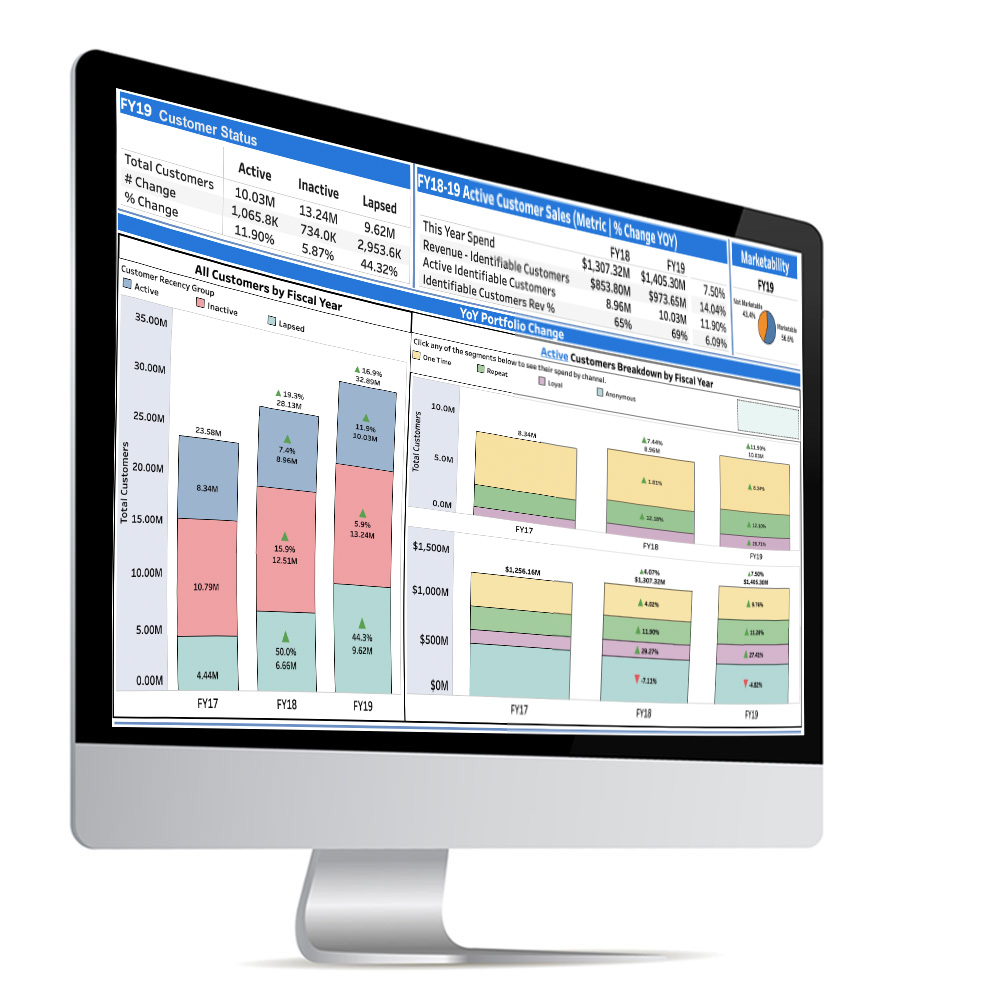
Marketers realize that just focusing on customer acquisition isn’t growing the overall customer “portfolio”. Too many opportunities to drive that growth – like retaining current customers or reactivating lapsed customers — are being overlooked. Your portfolio of customers is an asset, and you should constantly be looking to increase its value.
The solution is to have a total view into different segments within your customer database, including revenue, marketability and engagement. We recently rolled out a Portfolio Value Statement (PVS) for our clients to provide that view. The PVS reveals how the customer base is evolving and either positively or negatively impacting revenue.
The PVS brings light to all of the marketing activity you have in place and helps identify needs for additional marketing efforts to specific customer segments. For example, it could prove the need for growing the business through retained customers, instead of merely through acquisition.
Before determining marketing efforts, you need to define the customer segments.
Portfolio Segments: Diving In
Here is how we break down our clients’ customer portfolios into actionable behavior-based segments:
We first identify where customers are in their buying lifecycle, which allows us as marketers to determine how much we know about them.
Lifecycle Groups:
- One Purchase customers
- Repeat Purchase customers
- Loyal Customers have crossed the loyalty threshold
Within the lifecycle groups, we then look for how active a customer currently is.
Recency Segments:
- Active customers
- Inactive customers
- Lapsed customers
Now that we have the segments identified, we can take another cut of this data, especially for our loyal clients, to see how our current marketing efforts are impacting them.
Customer Status:
- New customers
- Retained customers
- Reactivated customers
Having identified these segments and their profitability, it’s time to pursue them for a relationship that grows topline revenue while maintaining target margins.
Next Step: Lifecycle Marketing
With this better view of segmentation, marketers can focus on the best way to strategize customer lifecycle campaigns.
Lifecycle marketing lets marketers give their customer the customized treatment that has the best chance of pushing them forward through the buying lifecycle – instead of capitalizing on those who are likely to buy regardless, or providing blanket offers for everyone. That’s how you generate real growth of your customer portfolio.
First and foremost, marketers can create more targeted campaigns because the portfolio value statement helps them really understand each buyer stage. With the dedicated expertise of a segment manager, they can not only understand the customer better, they can get a good idea of the revenue they’ll get from the campaigns.
The Bottom Line
For many marketers, the standout benefit of a portfolio value statement is that it lets them predict the revenue up front, and then follow steps to make that happen.
Viewing customers as a portfolio helps retail marketers understand the value of segmenting their database as a serious discipline, rather than take a cookie cutter approach, or ignoring all else for the sake of acquisition. And it is becoming an important competitive differentiator – progressive marketing focuses on more than just the last 12 months now.
A portfolio view makes marketers better budgeters and better decision makers overall. And when it’s time for marketing to propose its plan – and defend its budget and spend – a portfolio value statement gives them a compelling argument. It is based on accurate forecasts for long term revenue that will grow the entire customer portfolio for years ahead.



